Normal Alphabet worksheets activities for Ages 3-8
9 filtered results
-
From - To
Discover a variety of engaging Normal Alphabet worksheets designed for children aged 3 to 8! Our comprehensive activities promote early literacy skills, helping young learners recognize letters, improve handwriting, and build vocabulary. Tailored to different learning styles, these worksheets feature fun illustrations and interactive tasks that captivate kids' attention while making learning enjoyable. From tracing and matching to coloring and finding letters, these exercises ensure a solid foundation for future reading and writing mastery. Perfect for both classroom and home use, our Normal Alphabet worksheets provide educators and parents with valuable tools to support their child's educational journey. Start exploring the world of letters today!
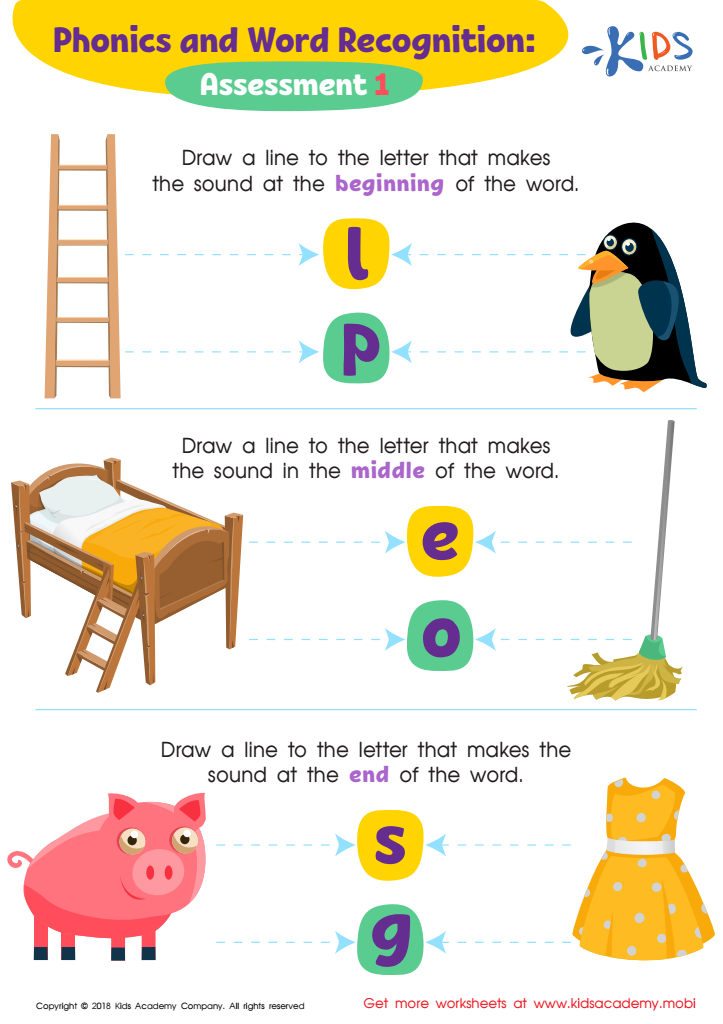

Phonics and Word Recognition: Assessment 1 ELA Worksheet
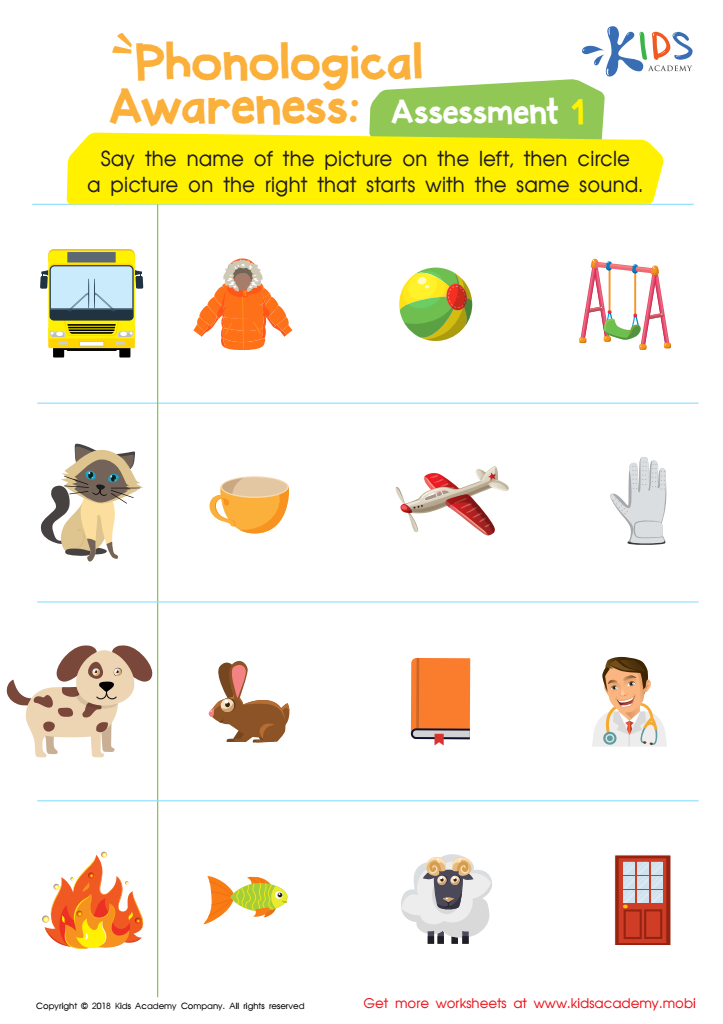

Phonological Awareness: Assessment 1 Worksheet
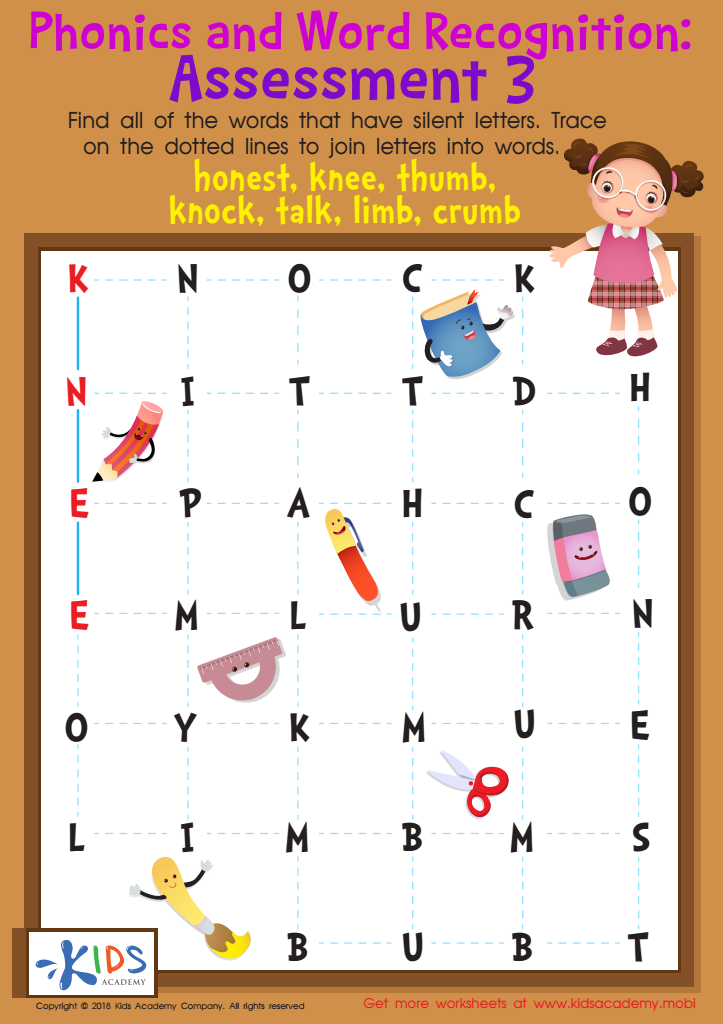

Phonics and Word Recognition: Assessment 3 Worksheet
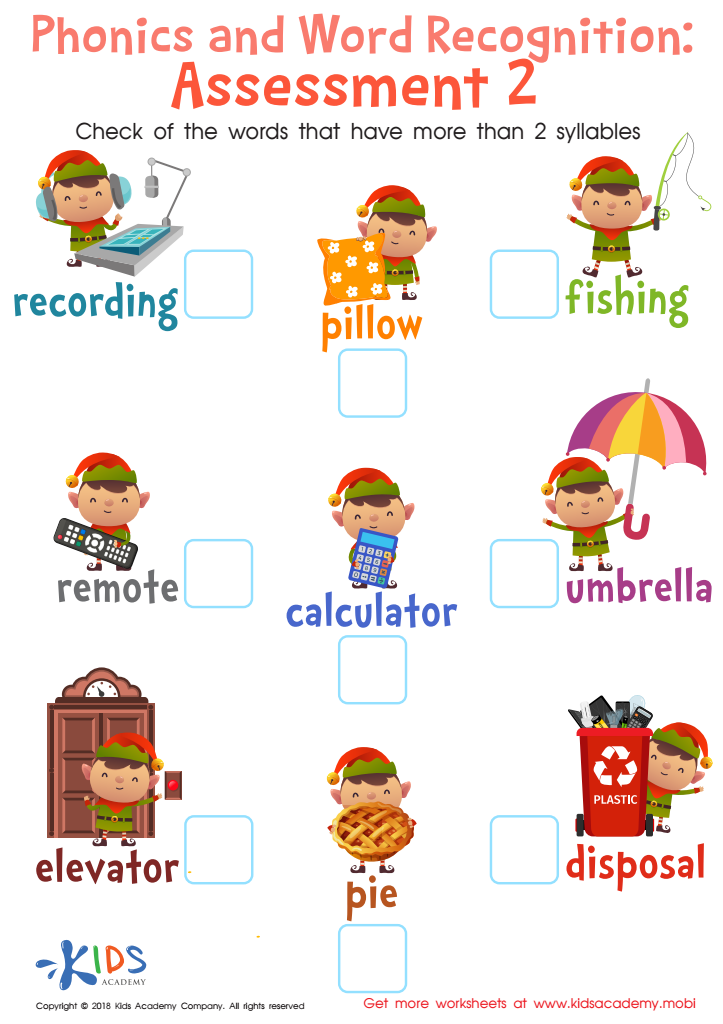

Phonics and Word Recognition: Assessment 2 Worksheet
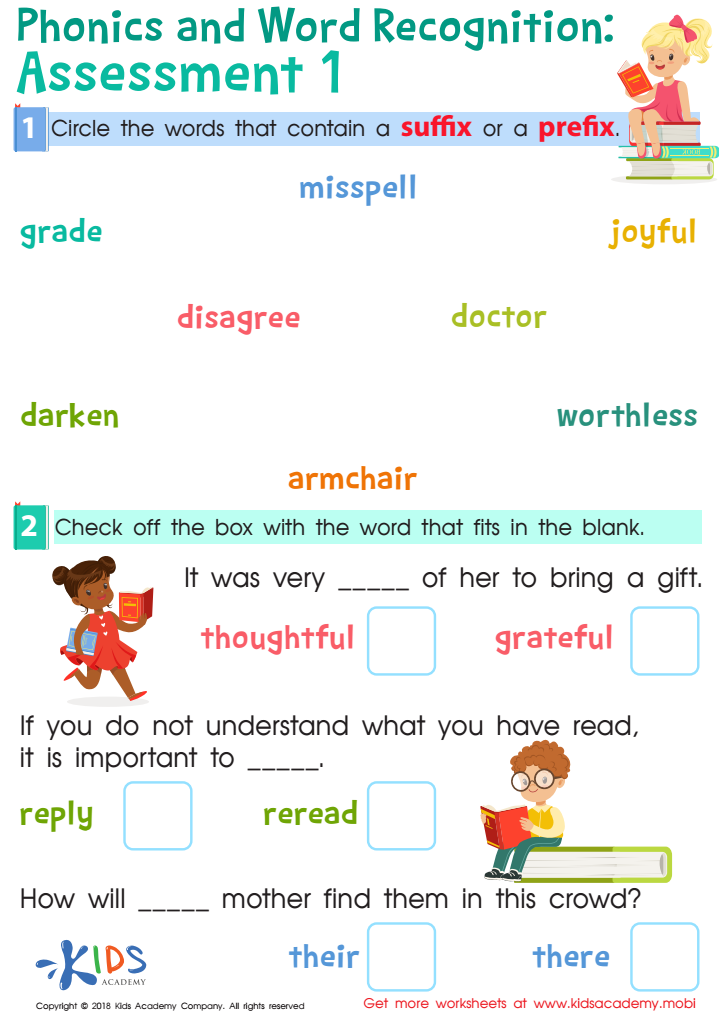

Phonics and Word Recognition: Assessment 1 Worksheet
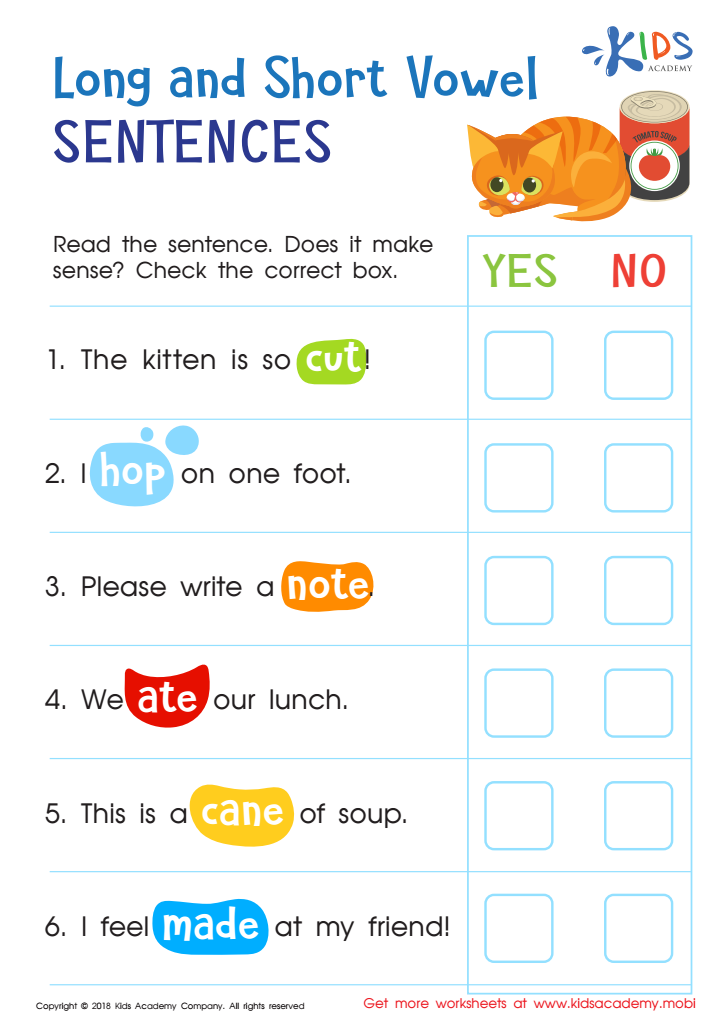

Long and Short Vowel Sentences: Assessment Worksheet
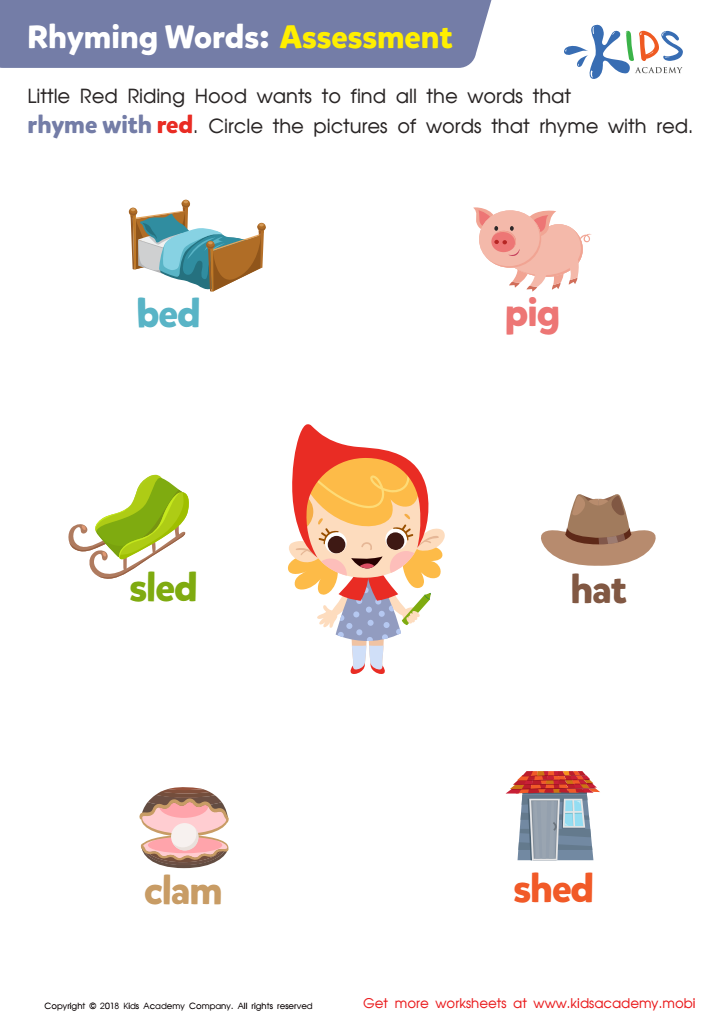

Rhyming Words: Assessment Worksheet
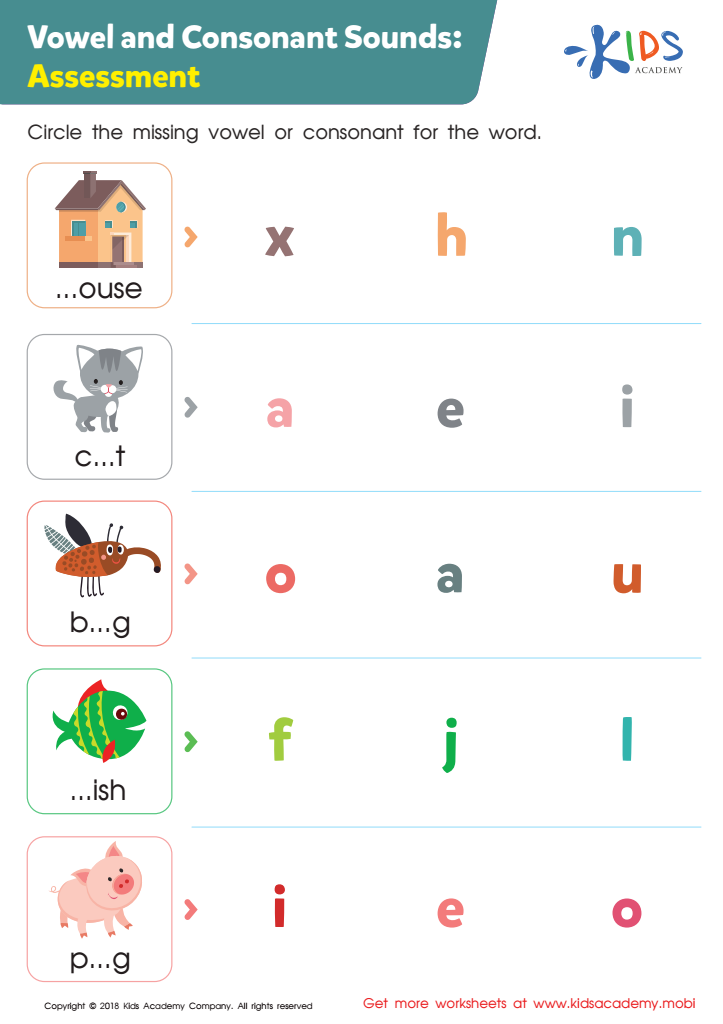

Vowel and Consonant Sounds: Assessment Worksheet
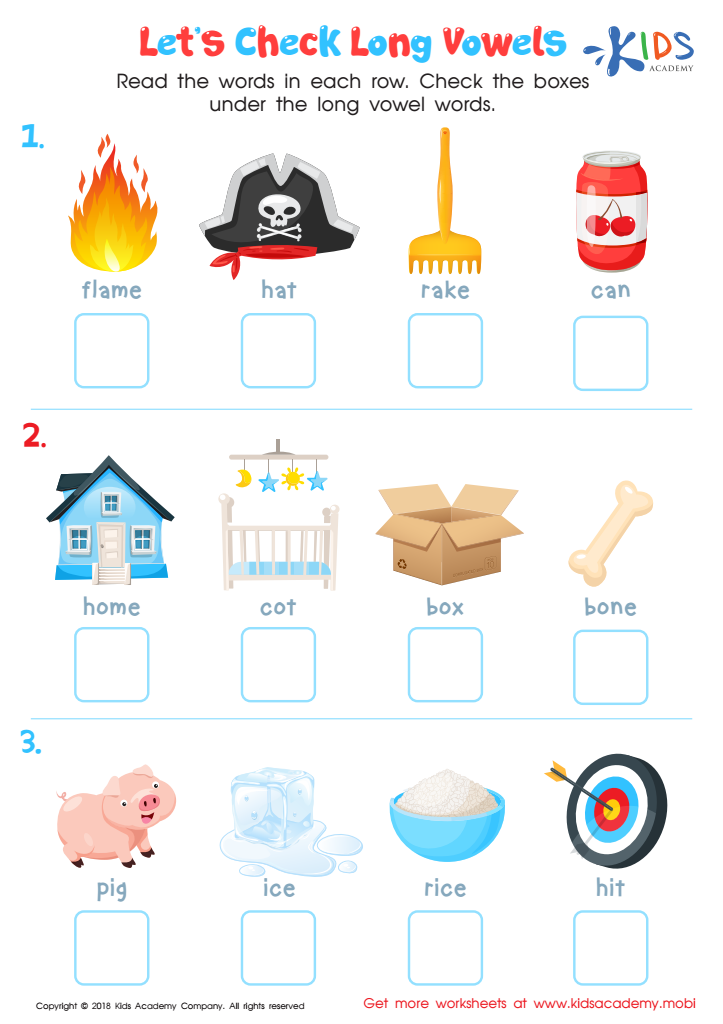

Let's Check Long Vowels: Assessment Worksheet
Normal Alphabet activities for children aged 3-8 are crucial for their early literacy development and overall cognitive growth. During this formative stage, children are highly receptive to learning new concepts, and engaging with the alphabet lays the foundation for their reading and writing skills. These activities help young learners recognize letters, understand their sounds, and develop phonemic awareness—essential components of literacy.
Additionally, alphabet activities often incorporate play, making learning enjoyable and interactive. This playful approach fosters a love for reading and exploration, encouraging lifelong learning habits. As students engage in these activities, they also develop fine motor skills through writing and manipulating letter cutouts, which enhances their physical development.
Moreover, parents and teachers play a pivotal role in nurturing a child’s literacy journey. By emphasizing Alphabet activities, they can strengthen the connection between home and school, promoting a consistent learning environment. This engagement also offers opportunities for meaningful bonding through shared reading and letter games.
Ultimately, Normal Alphabet activities not only support literacy skill development but also boost children’s confidence and creativity, equipping them with essential tools for academic success and future learning endeavors.

 Assign to My Students
Assign to My Students














